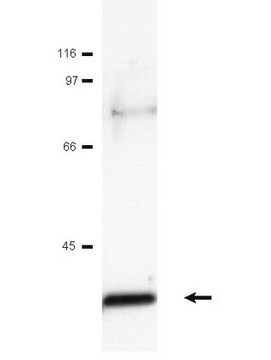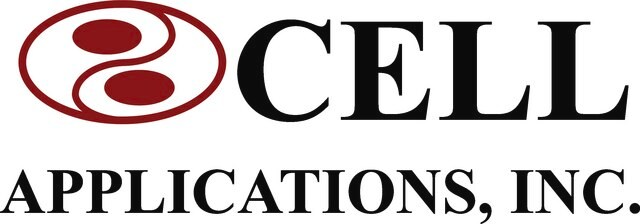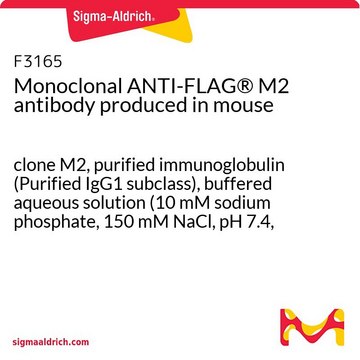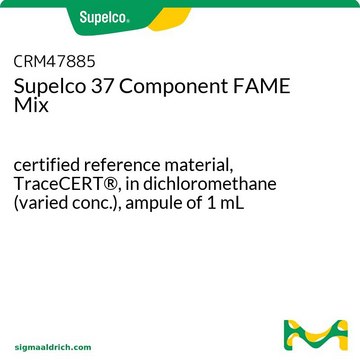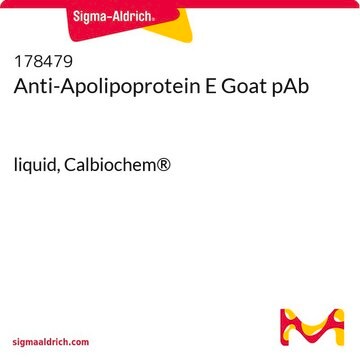A5968
Anti-AP-1 antibody produced in rabbit
affinity isolated antibody, buffered aqueous solution
Sinónimos:
Ap-1 Antibody, Ap1 Antibody, Ap1 Antibody - Anti-AP-1 antibody produced in rabbit, Anti-c-Jun
About This Item
Productos recomendados
biological source
rabbit
Quality Level
conjugate
unconjugated
antibody form
affinity isolated antibody
antibody product type
primary antibodies
clone
polyclonal
form
buffered aqueous solution
mol wt
antigen 39 kDa
species reactivity
human
technique(s)
immunohistochemistry (formalin-fixed, paraffin-embedded sections): 1:200 using formalin-fixed, paraffin-embedded sections of human colon carcinoma
microarray: suitable
western blot: 1:200 using HeLa nuclear extract
UniProt accession no.
shipped in
dry ice
storage temp.
−20°C
target post-translational modification
unmodified
Gene Information
human ... JUN(3725)
General description
Anti-AP-1/c-Jun recognizes an epitope located on the c-Jun DNA binding domain. This epitope is highly conserved in c-Jun, Jun B and Jun D proteins of chicken, mouse, rat, and human. By immunoblotting, the antibody reacts specifically with AP-1/c-Jun (a single band or occasionally a doublet at 39kDa region). Additional bands of lower molecular weight may be observed. Staining of AP-1/c-Jun band(s) is inhibited by the AP-1/c-Jun immunizing peptide (amino acid residues 246-263).
Immunogen
Application
- immunohistochemistry
- immunochemistry
- western blotting
Biochem/physiol Actions
Physical form
Disclaimer
¿No encuentra el producto adecuado?
Pruebe nuestro Herramienta de selección de productos.
Optional
Storage Class
10 - Combustible liquids
wgk_germany
WGK 3
flash_point_f
Not applicable
flash_point_c
Not applicable
Elija entre una de las versiones más recientes:
Certificados de análisis (COA)
¿No ve la versión correcta?
Si necesita una versión concreta, puede buscar un certificado específico por el número de lote.
¿Ya tiene este producto?
Encuentre la documentación para los productos que ha comprado recientemente en la Biblioteca de documentos.
Nuestro equipo de científicos tiene experiencia en todas las áreas de investigación: Ciencias de la vida, Ciencia de los materiales, Síntesis química, Cromatografía, Analítica y muchas otras.
Póngase en contacto con el Servicio técnico